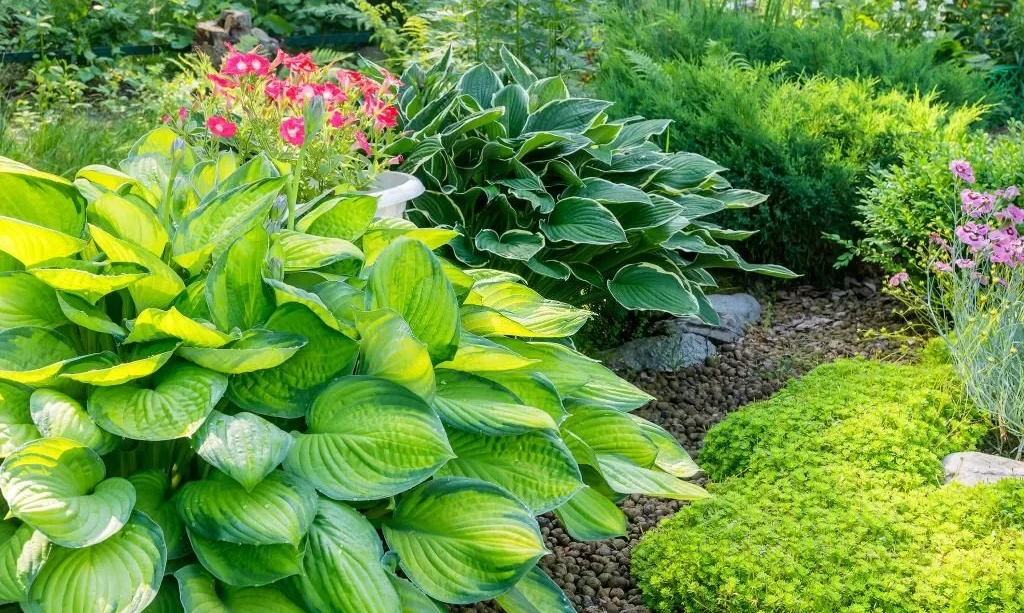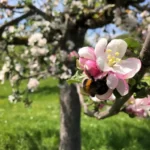Hostas, often referred to as the “queen of the shade garden”, have earned their royal status among gardeners for their stunning foliage and adaptability. These perennial plants are cherished for their lush, heart-shaped leaves, which come in a range of captivating colors and patterns. As versatile as they are elegant, hostas have found a special place in gardens of all styles. Yet, amid the admiration for their beauty, a question commonly arises among garden enthusiasts: Do hostas spread?
- SHADE PLANTS: Hosta ‘So Sweet’ is a wonderfully fragrant hosta, hence its name. It is a rapid grower with very shiny, dark green leaves and yellow margins in Spring.
- GROWTH: This hosta grows to be about 12 inches tall and 22 inches wide.
- CARE: All hostas need some shade and few, if any, will do well in strong direct sunlight. Water regularly. They will fully mature in four to eight years. For the best care of hostas, plant them in rich organic soil with a slightly acidic pH.
- FUN FACT: Hosta, also known as plantain lily, is a genus of about 40 plants native to Eastern Asia.
- LIVE PLANTS: Our plants are grown exclusively for Deep Roots and The Three Company, shipped fresh directly from our greenhouse to you!
Hosta Overview
Before we delve into the intriguing world of hosta spreading, it’s important to gain a deeper understanding of these remarkable plants:
Hostas belong to the genus Hosta and are known for their distinctive foliage, which varies not only in color but also in texture and size. Some hostas boast leaves with striking variegation, while others exhibit solid shades of green, blue, or gold. They thrive in shaded to partially shaded areas, making them invaluable for adding texture and color to gardens where sunlight is limited.
Hostas are celebrated for their adaptability and are available in a vast array of cultivars, each with its unique charm. From miniature hostas that fit perfectly in rock gardens to large varieties that create dramatic focal points, there’s a hosta for nearly every garden situation.
As we embark on this exploration of hosta spreading habits, it’s important to appreciate the beauty and versatility that these plants bring to gardens while addressing the curiosity surrounding their growth patterns.
The Nature of Hosta Growth
Understanding the nature of hosta growth is essential to grasp their spreading habits. Hostas are characterized by their clumping growth habit, which is typical of most hosta varieties. This means that as hostas mature, they tend to form dense, rounded clumps of foliage. This clumping habit is one of the reasons why hostas are prized in gardens. It allows them to create attractive mounds of lush foliage that can be used for ornamental purposes, ground cover, or to fill in shaded areas.
Unlike some aggressive spreading plants, hostas do not send out runners or invasive underground rhizomes. Instead, they expand gradually by adding new leaves and stems to their existing clumps. As a result, hostas maintain a neat and well-behaved appearance in the garden.
How Hostas Spread
Hostas spread primarily through the division of their root clumps. Over time, the central crown of a hosta plant grows larger, producing additional stems and leaves. As new growth occurs, the hosta’s clump naturally expands outward. This process is entirely natural and contributes to the hosta’s ability to fill in spaces in a garden and create lush, leafy displays.
It’s important to note that hosta spreading occurs at a relatively slow pace, especially when compared to more aggressive ground covers or invasive plants. While hostas can gradually increase in size, they do so in a controlled and predictable manner. Gardeners often find this gradual expansion to be advantageous, as it allows them to manage and shape their hosta displays over time.
Factors Affecting Hosta Spreading
Several factors can influence the rate of hosta spreading in your garden:
- Soil Quality: Hostas thrive in rich, well-draining soil. The availability of nutrients can impact their growth rate. Ample nutrients can encourage healthy expansion, while poor soil conditions may slow growth.
- Moisture Levels: Adequate moisture is crucial for hostas, but excessive water can lead to rapid growth. Properly maintaining soil moisture levels can help control spreading.
- Sunlight: Hostas’ growth and spreading tendencies can vary depending on the amount of sunlight they receive. While they are shade-tolerant, more sunlight can stimulate faster growth.
- Spacing: The distance between hosta plants can also influence their spreading. Crowded plantings may limit their expansion, while well-spaced plants have more room to grow.
- Optimal Root Development: Our soilless mix encourages robust root systems, promoting strong and healthy plant growth from the start.
- Versatile Use: Suitable for various plant types, from house plants to other propagated varieties, making it a versatile addition to your gardening toolkit.
- Lightweight Composition: The blend’s lightweight nature ensures ease of use and handling during the delicate stages of plant propagation.
- Well-Aerated Environment: The mix provides excellent aeration, preventing issues related to waterlogging and supporting the development of vigorous roots.
- Hand-Blended Quality: Carefully crafted by hand, this planting mix is a testament to quality and precision, ensuring consistent results with each use.
Controlling Hosta Spread
For gardeners who wish to control or limit the spreading of hostas in their gardens, several strategies can be employed:
- Dividing Hostas: Periodically dividing mature hostas is a practical way to manage their size and rejuvenate the plants. Divisions can be replanted or shared with fellow gardeners.
- Transplanting: Moving hostas to new locations within the garden can help control their spread. This allows you to redistribute them or create visually appealing groupings.
- Physical Barriers: Installing physical barriers like plastic or metal edging can create boundaries that prevent hostas from spreading beyond desired areas.
- Pruning: Regularly removing older leaves or spent flower stalks can help maintain the size and appearance of hosta clumps.
Conclusion and Key Takeaways
In conclusion, while hostas do exhibit spreading tendencies, their growth is generally well-behaved and manageable in gardens. Their clumping habit and slow expansion rate make them valuable additions to a variety of garden settings.
Key takeaways from this exploration include an understanding of hosta’s clumping nature, their gradual and predictable spreading, and the factors that can influence their growth. Gardeners can appreciate hostas for their versatility and adaptability while using strategies like dividing and transplanting to control their spread and maintain the desired appearance in their gardens.
Ultimately, hostas enrich gardens with their captivating foliage and serve as a testament to the harmonious coexistence of nature and horticulture.





